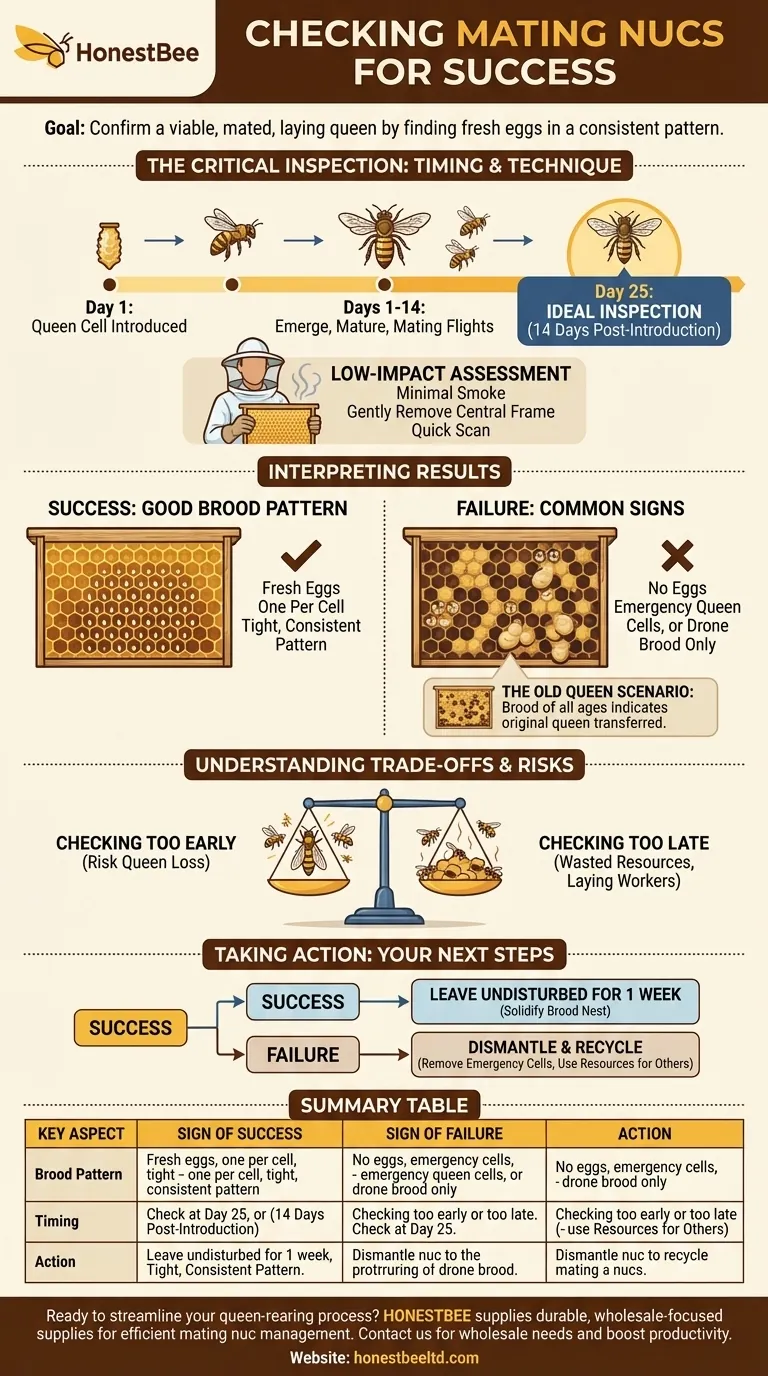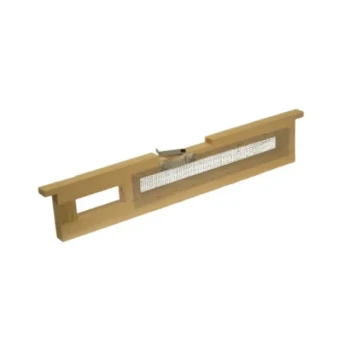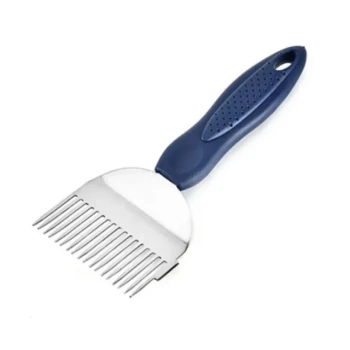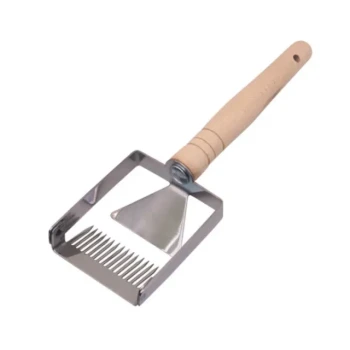To determine if a mating nuc is successful, you must perform a careful inspection approximately two weeks after introducing a queen cell. The definitive sign of success is finding frames with fresh eggs laid in a tight, consistent pattern, with one egg centered in the bottom of each cell. This confirms you have a viable, mated, and laying queen.
The core task is not just finding a queen, but evaluating her quality based on the evidence she leaves behind. A systematic check allows you to quickly decide whether to support a successful nuc or efficiently repurpose a failed one, maximizing both your time and hive resources.

The Critical Inspection: Timing and Technique
Properly evaluating a mating nuc is a process of disciplined observation. Rushing this check or performing it at the wrong time can lead to incorrect conclusions or even cause the failure you are trying to detect.
When to Perform the Check
The ideal time for this inspection is Day 25, which is roughly 14 days after you introduced the ripe queen cell.
This timeline accounts for the queen's natural development cycle: a few days to emerge and mature, several days for orientation and mating flights (which are weather-dependent), and a few more days before she begins to lay eggs.
The Inspection Process
Your goal is a quick, low-impact assessment.
Use minimal smoke, as a small nuc can be easily overwhelmed. Gently remove one of the central frames, as this is where a new queen is most likely to begin laying. Scan the frame for the signs of success or failure.
Interpreting the Results: Success vs. Failure
Your observations will guide your next steps. A nuc has either succeeded, failed, or requires further observation.
The Clear Sign of Success: A Good Brood Pattern
A successful mating is confirmed by the presence of fresh eggs. Look for tiny, white, rice-like specks standing upright in the bottom of the cells.
A good pattern is crucial. The queen should be laying in a consolidated area, not scattering single eggs randomly across the frame. This demonstrates she is healthy and fertile.
Common Signs of Failure
If you do not find a good pattern of fresh eggs, look for signs of failure:
- No Eggs, No Queen: The nuc may be queenless. The virgin may have been lost on her mating flight or failed to emerge.
- Emergency Queen Cells: If the bees have started building new queen cells on the frame, they have recognized they are queenless.
- Drone Brood Only: If you see lumpy, protruding capped cells and find frames with multiple eggs per cell (or eggs on the cell walls), you have a drone-laying queen or laying workers. The queen failed to mate properly.
The "Old Queen" Scenario
If you find frames with brood of all ages—eggs, larvae, and capped worker brood—it suggests the original queen from the parent colony was accidentally transferred into the nuc. This nuc is not a failure, but it has not served its purpose of mating a new queen.
Understanding the Trade-offs
The timing of your actions is a balance of risks. Both acting too soon and waiting too long have negative consequences.
Checking Too Early
Inspecting the nuc before the 14-day mark is risky. You may disturb a virgin queen before or during her mating flights, which can cause the bees to reject or kill her upon her return.
Checking Too Late
Waiting much longer than two weeks to check a failed nuc wastes resources. The nuc's population will dwindle, and the bees may develop laying workers, making it much harder to introduce a new queen or combine the nuc with another colony.
The "One Week" Rule Post-Confirmation
Once you confirm a queen is laying well, leave her undisturbed for another full week. Moving or manipulating the nuc too soon can stress the new queen. This period allows her to solidify her brood nest and fully develop her pheromones, ensuring her acceptance and long-term success.
Taking Action: What to Do Next
Your inspection should always conclude with a decisive management action.
For Successful Nucs
If you find a well-mated, laying queen, close up the nuc and leave it alone. Allow her to lay for at least one more week to build up a solid population before you consider moving her to a full-sized production hive.
For Failed Nucs
Do not let a failed nuc languish. Take immediate action by dismantling it.
Remove any emergency queen cells and ensure there are no virgin queens or drone layers present. The frames of bees and food can then be used to strengthen other successful mating nucs or weaker colonies. This recycles your resources and prevents a failed unit from becoming a drain.
Making the Right Choice for Your Goal
Your approach to managing mating nucs should align with your beekeeping objectives.
- If your primary focus is maximum efficiency: Adhere strictly to the 14-day inspection schedule and be decisive about dismantling failed nucs to reallocate their resources immediately.
- If your primary focus is colony growth: Use the frames of bees and food from failed nucs to boost the population of your successful nucs, helping them grow faster.
- If you suspect a problem like poor weather: You may justify a very quick, minimally invasive check around day 10 just to confirm a queen is present, but avoid pulling frames until the scheduled Day 14 inspection.
By applying this systematic approach of observing, interpreting, and acting, you transform queen rearing from a game of chance into a predictable and productive process.
Summary Table:
| Key Aspect | Sign of Success | Sign of Failure |
|---|---|---|
| Timing | Check at Day 25 (14 days post queen cell introduction) | Checking too early (risk queen loss) or too late (wasted resources) |
| Brood Pattern | Fresh eggs, one per cell, in a tight, consistent pattern | No eggs, emergency queen cells, or drone brood only |
| Action | Leave undisturbed for 1 week to solidify brood nest | Dismantle nuc, recycle bees/frames to strengthen other colonies |
Ready to streamline your queen-rearing process? HONESTBEE supplies commercial apiaries and beekeeping equipment distributors with the durable, wholesale-focused supplies needed for efficient mating nuc management. From nuc boxes to protective gear, we provide the reliable tools for success. Contact our team today to discuss your wholesale needs and boost your operation's productivity.
Visual Guide

Related Products
- Automatic Heat Preservation 6 Frame Pro Nuc Box for Honey Bee Queen Mating
- JZBZ Langstroth Queen Rearing Frame for Beekeeping
- Plastic Chinese Queen Grafting Tool for Bee Queen Rearing
- 4 Frame Plastic Nuc Boxes for Beekeeping Bee Nuc Box
- Professional Wooden Requeening Frame for Beekeeping
People Also Ask
- What are the benefits of moving nuclei around the apiary? Master Strategic Hive Management
- What happens if a nuc is left queenless? Prevent Swarming and Colony Collapse
- What are the advantages of purchasing a nuc over a package of bees? A Head Start for New Beekeepers
- What is the method for making several smaller nuclei from a single colony? Accelerate Apiary Growth with the Split Technique
- What is the process of making a nucleus in beekeeping? Master Sustainable Apiary Management















